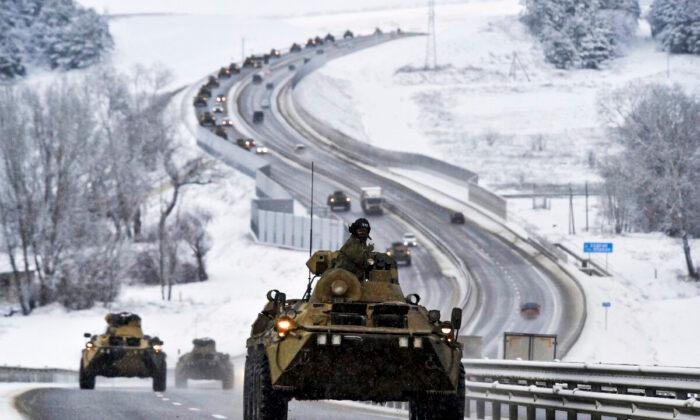Commentary
The escalation of tensions in Ukraine has reminded us of something many investors seemed to have forgotten: geopolitical risk. Sanctions and the inevitable drop in trade have proven to generate a significant negative impact on the different economies involved. We know from the 2014 Ukraine crisis that the economic hit is severe and persistent.
The economic hit of sanctions is undoubtedly highest for Russia.
As the
New Atlanticist reports: "The International Monetary Fund (IMF) estimated in 2015 that Western sanctions and Russian countersanctions reduced Russian real gross domestic product (GDP) initially by 1–1.5% and that prolonged sanctions would lead to an even larger cumulative output loss. In 2019, the IMF estimated that sanctions reduced Russia’s growth rate by 0.2 percentage points every year in 2014–2018.”
The effect on Russian citizens is wide-ranging, even when the sanctions are targeted at individuals and state banks. The most obvious impact is the loss of purchasing power of the local currency, which has plummeted against the U.S. dollar, which reduces salaries and savings in real terms.
The United States doesn’t sustain a relevant direct impact from sanctions on Russia. It imported around $30 billion from Russia in 2021 and exported $6.4 billion, according to the
U.S. Census Bureau. However, it does face indirect implications, as consumer prices soar due to rising energy and food prices. Russia is a relevant global player in the export of metals and agricultural and energy goods, and sanctions affect the marginal pricing in global markets.
The European Union (EU) has far more to lose than the United States from a conflict with Russia. According to Eurostat, Russia is the fifth-largest trade partner of the EU, with imports of $177.9 billion and exports of $104.1 billion (
pdf). Additionally, reliance on Russian natural gas is high, particularly in countries such as Germany and the Czech Republic. Eleven EU countries import more than 50 percent of their natural gas requirements from Russia. For many, it would be impossible to offset the flow of Russian gas with liquefied natural gas, even using trucks if they were willing to accept prohibitive prices.
The impact on Ukraine is enormous. In “
The Economic Effect of Hybrid Wars,” a study by Julia Bluszcz and Marica Valente, they show that “causal effects are estimated by computing the yearly difference in GDP per capita between Ukraine and its synthetic counterpart after the eruption of the war. ... Results indicate that Ukraine’s foregone GDP per capita due to the Donbass war amounts to 15.1% on average in years 2013-2017“ and, ”
respectively, 5.23% ($460.26), 9.18% ($832.96), 19.63% ($1,823.78), 19.80% ($1,893.38), 21.67% ($2,184.13) in 2013, 2014, 2015, 2016, and 2017.”
There’s also an indirect impact on the global economy. Rising tensions in Ukraine are showing the widening differences between Western countries and the Russia–China-influenced nations. This is more than just about Ukraine or natural gas flows. The West is losing influence in Africa and Latin America in favor of China and, to a lesser extent, Russia. Latin America is slowly shifting toward China and Russia, as evidenced by the messages of the president of Argentina and the newly appointed Chilean prime minister.
The impact of geopolitical risk has made energy and food prices soar higher all over the world. The increase in essential goods prices comes after a terrible year for global real wages, eroded by central bank-fueled inflation.
The Ukraine crisis also arrives in the middle of an evident slowdown of the largest economies after the placebo effect of massive stimulus plans. These risks add to a scenario in which many economies are moving even closer to stagflation, and the ramifications will likely last longer than the conflict itself.
Views expressed in this article are opinions of the author and do not necessarily reflect the views of The Epoch Times.





